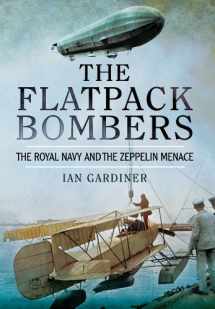
The Flatpack Bombers: The Royal Navy and the Zeppelin Menace
ISBN-13:
9781473822801
ISBN-10:
1473822807
Edition:
Reprint
Author:
Ian Gardiner
Publication date:
2014
Publisher:
Pen and Sword Military
Format:
Paperback
176 pages
FREE US shipping
on ALL non-marketplace orders
Marketplace
from $5.26
USD
Marketplace offers
Seller
Condition
Note
Seller
Condition
Used - Like New
Book details
ISBN-13:
9781473822801
ISBN-10:
1473822807
Edition:
Reprint
Author:
Ian Gardiner
Publication date:
2014
Publisher:
Pen and Sword Military
Format:
Paperback
176 pages
Summary
The Flatpack Bombers: The Royal Navy and the Zeppelin Menace (ISBN-13: 9781473822801 and ISBN-10: 1473822807), written by authors
Ian Gardiner, was published by Pen and Sword Military in 2014.
With an overall rating of 4.4 stars, it's a notable title among other
books. You can easily purchase or rent The Flatpack Bombers: The Royal Navy and the Zeppelin Menace (Paperback) from BooksRun,
along with many other new and used
books
and textbooks.
And, if you're looking to sell your copy, our current buyback offer is $0.41.
Description
Our vision of aviation in the First World War is dominated by images of gallant fighter pilots dueling with each other high over the Western Front. But it was the threat of the Zeppelin which spurred the British government into creating the Royal Flying Corps, and it was this ‘menace’, which no aircraft could match in the air at the beginning of the war, which led Winston Churchill and the Royal Navy to set about bombing these airships on the ground. Thus in 1914, the Royal Naval Air Service, with their IKEA-style flat pack airplanes, pioneered strategic bombing. Moreover, through its efforts to extend its striking range in order to destroy Zeppelins in their home bases, the Royal Navy developed the first true aircraft carriers.This book is the story of those largely forgotten very early bombing raids. It explains the military and historical background to the first British interest in military and naval aviation, and why it was that the Navy pursued long distance bombing, while the Army concentrated on reconnaissance. Every bomber raid, and every aircraft carrier strike operation since, owes its genesis to those early naval flyers, and there are ghosts from 1914 which haunt us still today.


We would LOVE it if you could help us and other readers by reviewing the book
Book review

Congratulations! We have received your book review.
{user}
{createdAt}
by {truncated_author}


